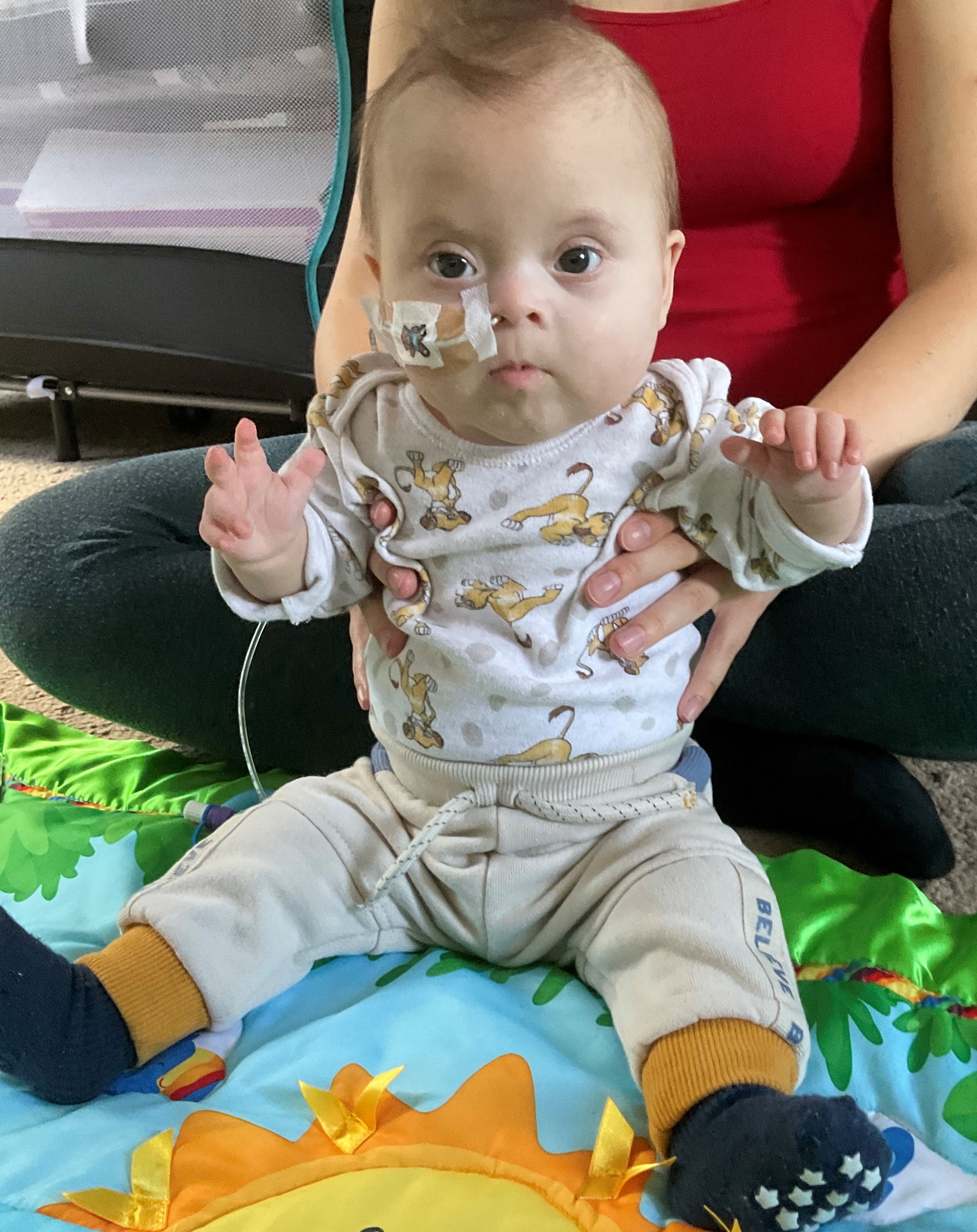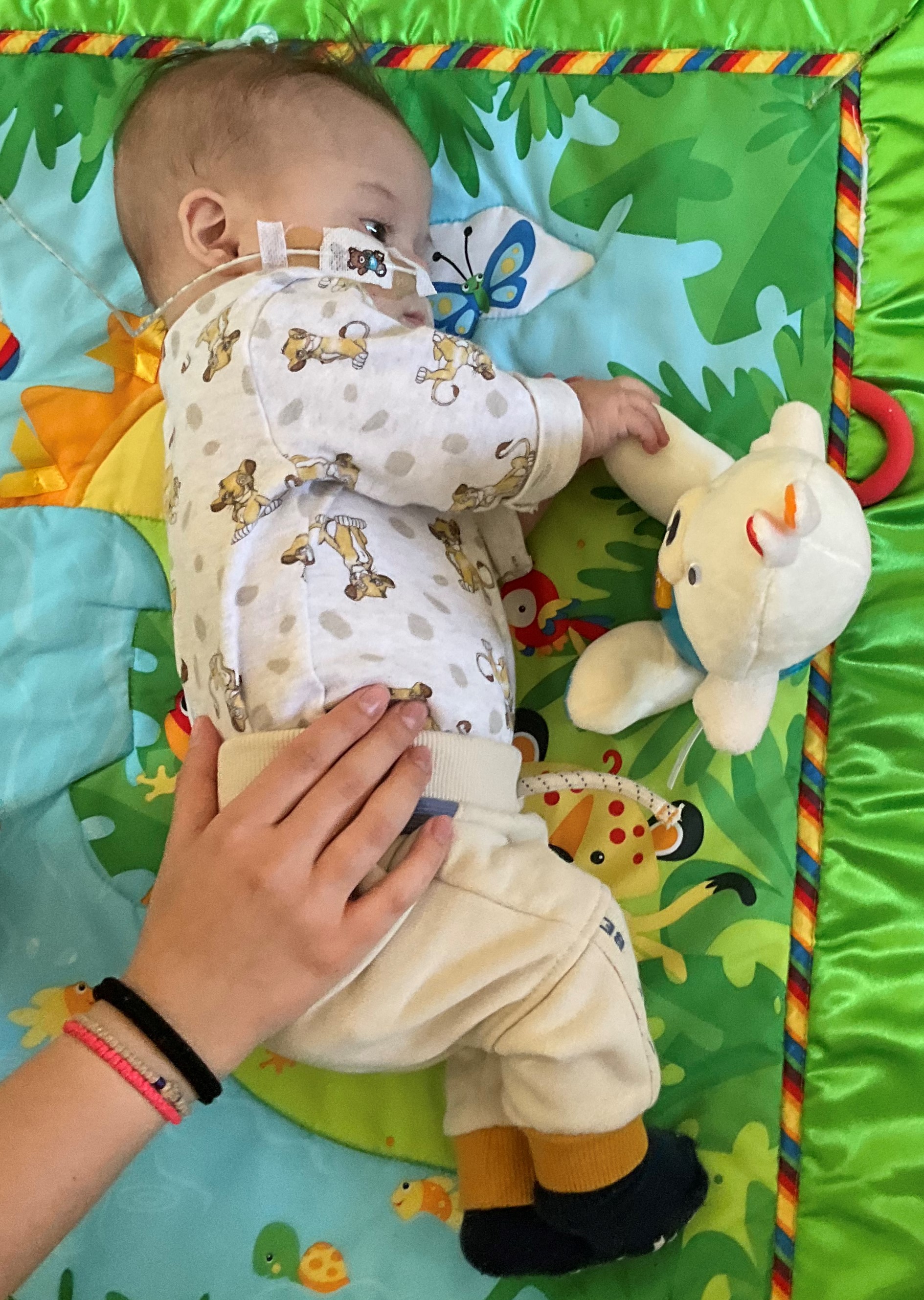This page covers the following activities:
Watch a short video, which also describes these activities:
Working towards sitting
At the stage when your baby can independently hold their head upright on propped forearms, you will probably start noticing that they are getting more head control generally. You may notice this when you are carrying your baby in an upright position, because they will not need as much support for their head.
 Once you notice your child is getting head control in an upright position, you can start having some play time in a supported sitting position (no longer reclined).
Once you notice your child is getting head control in an upright position, you can start having some play time in a supported sitting position (no longer reclined).
- Sit with them on the floor, in front of you. Hold them around their chest, just under their armpits initially.
- Have something of interest to them in front at face level. Mirrors can be great fun at this point, most little ones love looking at mirrors and they can also see you, which will engage them well!
- Gradually you can move your hands lower down their trunk as your child develops more trunk stability, until they will only require support at the pelvis.
Working towards rolling
Here are two more activities to help your child towards rolling:
Tummy time, Tummy time, Tummy time...
Tummy time is a really important position for play, in order to develop strength in your baby’s back, neck and arms.
- Some babies do not like tummy time on a play mat early on, so why not make it a time for bonding with your baby by lying them on you. Give them lots of interaction with happy faces and chatter!
- You can do this fully- or semi-reclined – a good opportunity to put your feet up!
Babies should only be placed on their tummy for playtime, and should be placed on their back for sleep. Do not leave your baby unattended when lying on their tummy.
Practise rolling!
 Your baby may not be able to do rolling by themselves yet, but it is great for them to experience the movement. This helps them understand how their body should move in order to roll and they experience the outcome of ending up in a different position.
Your baby may not be able to do rolling by themselves yet, but it is great for them to experience the movement. This helps them understand how their body should move in order to roll and they experience the outcome of ending up in a different position.
- Start by just assisting a roll into side lying: initiate your baby's roll by gently helping their leg to bend upwards and then over to the other side of their body
- Their shoulder may follow automatically but if not, give it a nudge to follow
- Once your baby has developed enough head control to maintain a head lift whilst lying on their tummy, you can practise rolling them from side to front
- In the same way, gently help the top leg to move down towards the floor. Often the underneath arm can get stuck – you can assist with this by placing it higher in line with the shoulder and tickling in the arm pit of the under arm. If these don’t work then gently assist the arm to a position in front. They should be able to do it in time.
The series of images below shows how you can assist your child with rolling:
Share your feedback
Tell us what you think of the information on this page. Complete a short, anonymous survey on Microsoft Forms.
